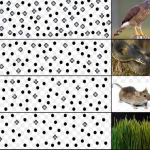6.1 A changing Landscape
How do our daily activities affect the environment?
What is the relationship between resource use and sustainable development?
6.2 Using resources wisely
Describe how human activities affect soil and land
Describe how human activities affect water resources
What are the major forms of air pollution
6.3 Biodiversity
Vocabulary:
- biodiversity
- ecosystem diversity
- species diversity
- genetic diversity
- habitat fragmentation
- ecological hot spot
Why is biodiversity important?
Biodiversity is the total of all genetically based variation is all organisms in the biosphere
3 Levels of Biodiversity
- Ecosystem biodiversity refers to the variety of habitats, communities, and ecological processes in the biosphere
- Species biodiversity is the number of different species in the biosphere or in a particular area
- Genetic biodiversity can refer to the sum total of all different forms of genetic information carried by a particular species or by all organisms on Earth
Why value biodiversity?
Biodiversity contributes to medicine, agriculture, and ecosystem goods and services is lost.
Identify current threats to biodiversity
- Altered habitats
Can come from converting native ecosystems into agricultural land or urban developments but also from habitat fragmentation or the process of splitting native habitats into “islands”.
2. Hunting and the demand for wildlife products
Although hunting can be a conservation management tool, people can over harvest and drive a species to extinction. Illegal wildlife trade can also contribute to a species becoming extinct either by removing an animals from the ecosystem or by releasing an invasive species into a new area
3. Introduced species
If a non native species is introduced to an area, it may outcompete native organisms.
4. Pollution
Many pollutants threaten biodiversity as they build up in an ecosystem. DDT was a pesticide that threatened birds of prey as the concentration magnified up each trophic level. This is called Biomagnification.
5. Climate Change
If global temperature rise 1.5- 2.0 degrees C, 30 % of species studied are likely to face increased risk of extinction
How do we preserve biodiversity?
- Protect individual species
- Preserve habitats and ecosystems
- Consider local interests
6.4 Meeting the ecological challenge
Questions for case study 1
- Why is an ozone layer in the atmosphere important?
- What is an ozone “hole”?
- What caused the depletion in the ozone layer and where did they come from?
- What trend does the graph show between 1996 and 2007?
- What caused this trend?
Questions for case study 2
- What caused the sharp increase in the catch between the late 1970s and the early 1980s?
- How do you know the decline in catch in the late 1980s was due to overfishing and not something else, like a decline in fishing?
- Is cod a renewable or nonrenewable resource?
- Based on the data is there a possibility we could run out of cod? Explain?
Questions for case study 3
- What is global warming?
- Between 1860 and 1920, did the land-surface air temperature change?
- When did the downward trend of sea ice begin?
- What has been the trend in global sea level since about 1920?
- What are the possible effects for towns and cities along the coasts of the United States?
- Why is it possible that global warming will cause the Sahara desert to become greener?
Coyote attacking lamb
Livestock guardian dog at work

